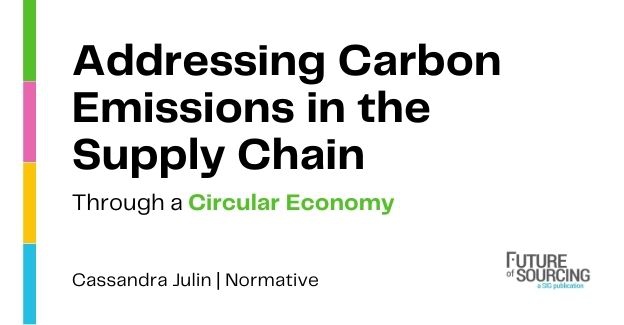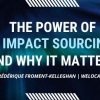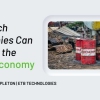Corporate value chain emissions – also referred to as Scope 3 emissions – account for 92% of an average business’s emissions, says Cassandra Julin, Head of Global PR for Normative. She explains how a circular economy helps businesses account for and reduce these emissions.
Today, most businesses operate in a linear economy. We use materials to produce products and when we’re done using those products we discard them as waste – the “take, make, and waste” system.
In a circular economy, we keep materials and resources in circulation as long as possible, without producing any waste.
Fundamental principles in a circular economy:
- Eliminate waste and pollution
- Circulate materials and products
- Regenerate nature
Greenhouse Gas Emissions: A Quick Overview
Greenhouse gasses (GHGs) are gases that when released in the atmosphere contribute to the warming of the planet.
The Greenhouse Gas Protocol – the defining framework for GHGs – divides these emissions into three scopes: Scope 1, Scope 2 and Scope 3.
Scope 1 covers direct emissions that a company generates while performing its business activities. Scope 2 covers indirect emissions from purchased energy, while Scope 3 covers indirect emissions in the value chain.
On average, 90% of a company’s emissions come from Scope 3. Reducing emissions is necessary to meet this goal – in any kind of economy.
Designing Out GHG Emissions
By its nature, a circular economy will have lower carbon emissions than a linear economy. Producing new materials results in carbon emissions; circular economies minimize the need for producing new materials by maximizing the re-use of resources, thus eliminating the carbon costs of producing new materials.
Put another way: the circular economy attempts to design out waste and carbon emissions are almost always waste.
An estimate from the 2021 Circularity Gap Report claims that a circular economy could reduce global GHG emissions by 39%.
Supply Chain Accountability Enables Targeted Reductions
Businesses and their value chains have a key role to play in achieving Paris-aligned climate targets. The latest climate science makes clear that to avoid the worst impacts of climate change, we must limit global temperature rise to 1.5°c.
That means cutting global emissions in half before 2030 and reaching net-zero emissions before 2050, which can only be achieved if we start measuring and reducing emissions in an accurate and systematic way.
The full value chain must be taken into account when reducing and measuring emissions. This includes Scope 3, which for many businesses are responsible for the vast majority of emissions: the average business sees 92% of its emissions originating in Scope 3, according to a 2020 CDP report.
By identifying circular changes like those in production, transportation and material use, the circular economy can be a catalyzer for reaching the climate targets.
For example, when working to measure and reduce the emissions for Flying Tiger Copenhagen, we helped them discover that textiles were one of their biggest emissions hotspots. They had a strategy in place for reducing emissions from solid materials like plastic, but none in place for textiles. With this knowledge, they were able to have a more circular approach to their material sourcing – and as a result reduce their emissions.
The recent Circularity Gap Report concludes that circular strategies can reconfigure supply chains to bypass emission hot-spots, and that with processes extending the lifespan of the material – such as repair – excess virgin material extraction would be reduced and fewer GHGs would be emitted.
Success Requires Engaging Value Chains
Given that Scope 1 and Scope 2 emissions are only the tip of the iceberg and that the majority of emissions are located in a businesses' value chain, addressing the value chain is key in order to succeed in reducing carbon emissions.
Taking responsibility for your value chain – which might seem outside of your control – can feel overwhelming. But with smart strategies in place, the value chain is where businesses can make a real impact.
Small changes can result in big reductions. For example, even if you can’t control the production methods used in your value chain, changing the materials used can still have a large impact.
Small businesses, especially, can gain competitive advantages when they take control of their emissions. Today’s suppliers compete not only on price, but also on sustainability factors – so being able to show sustainability commitments to purchasers can be key to winning contracts.
For businesses looking to reduce their carbon emissions, the journey can seem complicated and confusing. But you don’t have to go it alone. Carbon accounting companies support hundreds of businesses every day with measuring and reducing their emissions, all the way through their value chains.









